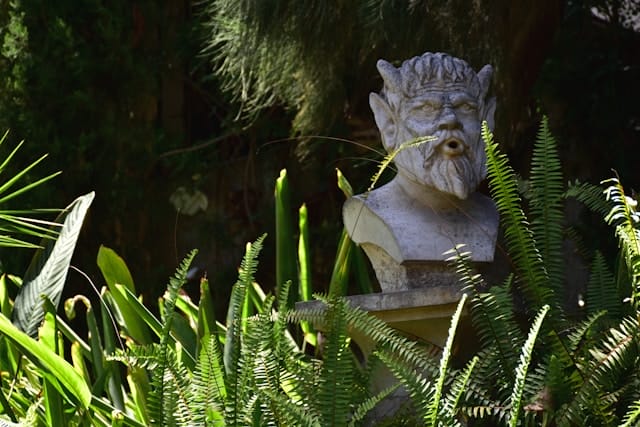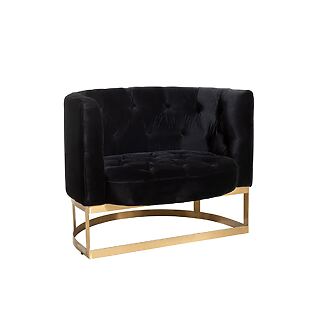A garden is much more than just a collection of plants. It is a place of calm, creativity and personal expression. And what could underline these aspects better than splendid garden statues? From classic figures to modern art - garden statues give a special note to a outside area.
A short history of the garden statues
Garden statues have a long and magnificent story that goes back to the ancient civilizations of Egypt , Greece and Rome . In those times, statues were not only decorative elements, but also symbols of religious and cultural ideas.
The Egyptians adorned their gardens with sculptures of gods and pharaohs, often made of sandstone or alabaster. In ancient Greece and Rome, on the other hand, statues of mythological figures and large philosophers, which were made of marble or bronze, were found.
It is exciting that many of these historical statues were not only popular with members of the upper class. In medieval monastery gardens in Europe, statues were also used, often in the form of saint figures that were not only decorative but also spiritually inspiring.
Statues in the modern garden: diversity and style
Nowadays there is a wide range of garden statues that meet different styles and preferences. We have summarized the most popular and common types for you.
Classic statues
Classic statues, often inspired by the Greek and Roman antiquity, are ideal for formal gardens. These figures often present people in an upright attitude, with detailed facial features and artistic robes.

Artistic garden statue made of stone casting "Bianca", young woman with baskets

Outdoor statuette "Götin Flora" by Roman Johann Strobl, version in art marble
Marble and artificial stone are common materials.
Modern-minimalist sculptures
Modern sculptures have reinterpreted classic shapes. Numerous contemporary designs are very popular with art lovers. Due to their striking lines, modern sculptures are considered very brave and innovative.

The contemporary style combines current elegance with traditional designs. If you want to stage your artistic side, a modern sculpture gives your space an exciting and avant -garde note.
Minimalist sculptures are perfect for the modern garden They are often abstract and consist of materials such as metal or concrete. These statues focus on the shape and structure and thus create visual contrasts to the soft lines of the plants.
Animal figures
Animal figures are very popular and have produced numerous bestseller statues. There are different styles that range from classic antique models to realistic representations. Animal figures give gardens a natural flair and are often designed in human poses, which creates a fascinating connection between humans and animals.

Another crucial factor for the success of animal statues lies in its deterrent effect. The variety of animal figures makes it possible to integrate frequently occurring pests into their garden. Statues such as owls, through their appearance and their functionality, have long been found among the best -selling figures.

These statues prove to be extremely effective in the fight against garden landlords and can also keep pigeons away. Thus, the owl figure acts as a scarecrow for your garden.

2 handmade garden sculptures "gray pair" made of bronze in the set
People / acts statements
Human figures are timeless classics that have long existed and are among the best -selling statues. The ancient Greeks and Romans perfected the art of representing human figures. Outside, these figures create a fascinating atmosphere for their guests.


With their well thought -out design, bestsellers such as human figures give a subtle elegance. The combination of wells and figures is also widespread. The traditional poses of the statues usually attract art lovers.

Nowadays, human figures with natural attitudes are widespread, including people who pursue fishing or other popular leisure activities.

Mythological figures
Mythological figures have always successfully asserted themselves on the market for sculptures and sculptures . The world of statues is penetrated by profound mysticism.
Garden figures were often used in the folklore to illustrate the role of these mythical protectors on their property. Similar to animal figures, mythological statues are often placed in gardens to keep malignant spirits away.

Large Water Spirit Stone Sculpture by Pépé-Crochet (Dresdner Steinmanufaktur)
The tradition of garden gnomes is an excellent example of such mythical figures. Garden gnomes have been among the most sold statues for centuries. Gargoyles , goalkeeper , water spirits , elves and goblins also popular mythological garden figures.

Classic Gargoyle sculpture "Reygar" made of stone casting, antique-gray design
Figurative and imaginative statues
Statues that represent people in different poses or imaginative creatures such as fairies and elves contribute to the creation of a magical ambient. Such figures are particularly popular with families with children because they promote adventures and stories in the garden.
Religious statues, angels and putten
Religious statues are among the oldest forms of sculpture and have a long tradition that goes back to the early church. They have been an integral part of Catholic practice for centuries and are used in both churches and private households.

"Amor" - baroque culpered putture made of sandstone casting
These statues of faith not only radiate religious importance, but also bring deep respect and a spiritual dignity into every home. Despite the many changes in the art world, religious statues remain highly valued and revered worldwide, as they embody timeless values and beliefs.

Baroque garden sculpture "Tamburo", romantic stone figure
The right location for garden statues
The location of a statue in the garden is crucial for its effect. Here are some quick tips to get the best out of your garden sculpture
Central eye -catcher
A statue that is located in the middle of the garden or at a prominently placed point can serve as the main attraction. Think of the famous statues in the large parks of Europe, which often take a look and act as an eye -catcher.
Limits and paths
Place statues at the borders of your garden or along paths. This is how you create visual hierarchies and draw your eyes through the room. Small statues along a path can be an invitation to explore the garden.
Water elements
Think about whether you want to place your statue next to a water element, be it a fountain, pond or a bird drink. Water not only gives a statue an additional visual stimulus, but also creates a calming atmosphere.
A detailed guide to the correct placement and arrangement of sculptures and statues in the garden can be found here: Art in the garden: How to properly place sculptures and stage them .
Materials and care of garden statues
Garden statues can consist of a variety of materials, and each material has its own advantages and disadvantages. The same applies to the different requirements for care and maintenance.
Stone and marble
Stone and marble are classic materials for garden statues. They are durable and have a timeless aesthetics. However, they are often difficult and can be attacked by the weather over time.
metal
Metal statues, especially bronze and stainless steel, are resistant and can represent very fine details. You can develop a patina that gives you an additional character, but should be maintained regularly to avoid rust.
Concrete and artificial stone
Concrete and artificial stone are inexpensive alternatives to natural stones and offer a variety of design options. They are robust and relatively easy to care for.
Care
Regardless of the material, garden statues should be cleaned regularly. Use a soft brush and mild soap water to remove dirt and algae. A corrosion agent is recommended for metal statues.
In winter, sensitive statues should be covered or brought into the house to avoid frost damage.
You can find detailed guides in our articles:
- Outdoor art: The best materials for outdoor sculptures
- Garden statues in hibernation: How to protect your outdoor treasures from frost and cold
Frequently asked questions about garden statues
Which materials are best suited for garden statues?
The best choice depends on your preferences and the style of your garden. Stone and marble are classic and durable, metal gives a modern note, and concrete is inexpensive and versatile.
Also take into account the climatic conditions in your region to choose the right material.
How do you maintain a garden statue?
Regular cleaning is important. Use a soft brush and mild soap water to remove dirt. Metal statues should also be treated with a corrosion agent. In winter, sensitive statues can be covered or brought into the house.
Where should you best place a garden statue?
The location depends on the function and the desired visual effect. A central placement can make the statue a main view, while a position along paths or at the garden boundaries invites you to explore. A statue can also come into its own near water elements.
Are garden statues only suitable for large gardens?
Absolutely not! Even smaller gardens or terraces can be enchanted with the right statue. Small figures or minimalist sculptures are ideal for compact outside areas and can set an intimate, charming accent.
Can you make garden statues yourself?
Yes, that is quite possible! Especially concrete or sound are materials that can also try beginners. There are numerous tutorials and instructions that show you step by step how you can create your own garden statue.
A homemade piece gives your garden a very personal touch.

Owner and Managing Director of Kunstplaza. Publicist, editor, and passionate blogger in the field of art, design, and creativity since 2011. Successful completion of a degree in web design as part of a university program (2008). Further development of creativity techniques through courses in free drawing, expressive painting, and theater/acting. Profound knowledge of the art market through many years of journalistic research and numerous collaborations with actors/institutions from art and culture.


















